What? |
|---|
|
Aogashima (青ヶ島) is part of the Izu Islands (伊豆諸島), and while it is inhabited, it is strangely enough not counted among the Izu 7. Maybe it's because there are only 160 residents left and the number is dwindling. With a southern, tropical location, beaches and diving and fishing might come to mind, but the shape of the island makes all that impossible. The attraction of the island is that it is a volcano crater inside a volcano crater. |
Where? |
|
There are only two ways to reach Aogashima and both ways go through nearby Hachijojima (八丈島). Either you take a helicopter (1 per day, 70-80% chance that it flies out) or you take the notoriously fickle ferry (4-5 sailings a week, 40-50% chance that it sets sail). Difficult to believe that the island is part of Tokyo Prefecture (東京都)! Hachijojima is easily reached though with three flights a day from Haneda Airport (羽田空港). 
|
URL |
|
Tokyo Islands Go Tokyo |
Take one look at the free licensed picture below and tell me you are not enticed. If you're not, maybe the content of this whole blog isn't for you - no harm done. But if it does, then like me you'd really want to see that place.
And so I started planning. Corona first messed up my plans, but this year I was ready to go. If only the weather gods were on my side then everything would be perfect. I had a few buffer days, but you'll never know if you get stuck on the island due to bad weather.
Realizing that the below view can only be had by chartered helicopter or drone, I nonetheless booked a spot on the regular helicopter transport in the small hope to catch a glimpse of that splendor. The weather was a bit cloudy but good enough to fly, and seeing the island doom out of the mist only strengthened the "Jurassic Park feeling". The helicopter doesn’t fly over the intriguing two volcano craters, but the vista is clear enough to see that the island is in fact just the tip of a huge underwater mountain. No shores, just high cliffs, inaccessible from the sea.
So while not exactly what I hoped to see, the approach by helicopter did not disappoint. Once landed and walking around the island though, the feeling of awe somewhat subsided.
Green and nature is abundant, but Aogashima is undeniably populated by Japanese. The sheer amount of digging machine left abandoned here and there, buildings and shacks strewn all over the place without any sign of spatial conformity, more construction workers than residents, and of course the absolute giveaway: the enormous amount of concrete used per capita.
It kind of contradicts the whole natural walhalla image.
What I found even more enervating is that new factories were built while old roads and shacks lie crumbling over the whole island. Who are they building this for? Why can’t they stay clear of the crater? During my 20km walk that covered pretty much the whole island, those were the thoughts that popped up in my head the most often.
It certainly isn't all bad. Whatever way you look at it, those peculiar matryoshka craters are very mesmerizing and there are some nice viewing spots strewn across the island.
Again, it's a pity that most woodland paths are neglected and overgrown and hikers are forced to take the asphalted roads and tunnels.
Even with all the efforts to turn the island into one giant ball of concrete, I feel that maintaining the walking paths would lead to stunning panoramas and maybe a little more influx from nature lovers. I do admit that I doubt whether the amount of tourists will ever overcome the number of construction workers who undoubtedly spend more to support the local economy.
As it is, half of the walking paths are overgrown and dangerous and the other half are closed because even more perilous.
The next day I was again lucky enough with the weather and I could take the ferry as scheduled. Arriving at the boarding point, it struck me again that the island just isn't shaped for harbors. The solution was to dig a tunnel and clad the whole mountain side above the pier full with concrete. But as the abandoned port on the other side of the island shows, this is only a temporary solution. No man can stop the erosion of this island and the outer walls will keep falling into the sea.
What will happen when the number of residents has dwindled even more? Will they start building a third one (actually 4th – the current harbor is built on the same place as another older one)?
I did have a nice walk, the views of the smaller "Maruyama" crater inside the bigger one are truly impressive, and I am glad that I made it here. But I am not sure if I would recommend coming here.
Maybe I had unrealistic expectations, or maybe I am comparing too much with yesterday's breathtaking hike to Mount Hachijo-Fuji, but something definitely felt missing.
That being said, when I stood on the ferry's outdoor deck and as I watched the island grow smaller, I felt a pang of nostalgia despite my mixed feelings and spending only one night. It must mean that Aogashima has a mystical, natural charm.
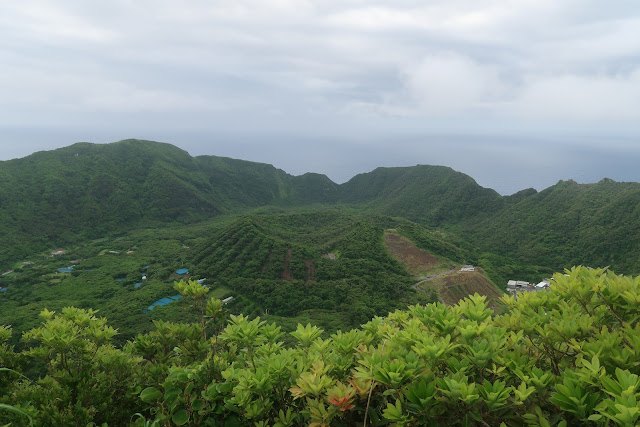

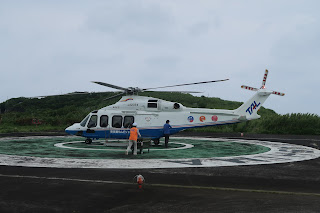
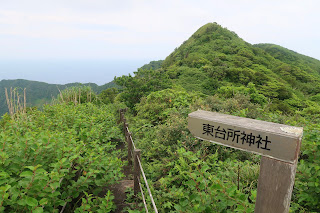
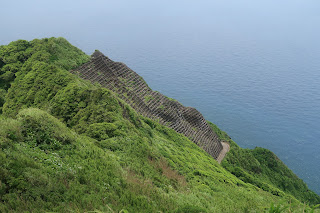
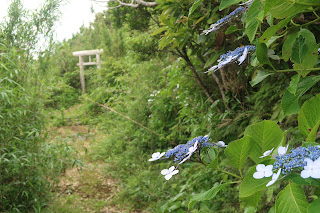
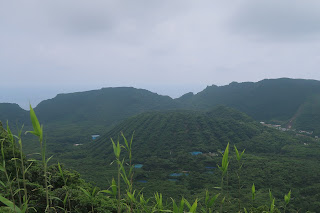













No comments:
Post a Comment